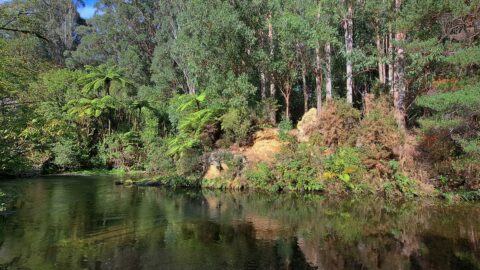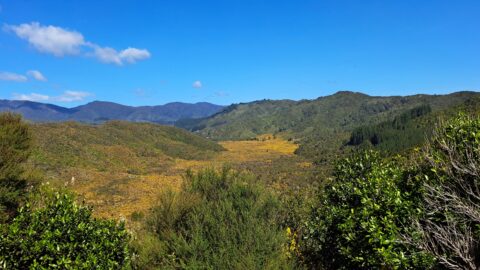New Zealand’s only parasitic flowering plant has been discovered in Wainuiomata, more than a century after wild populations were last seen in the region.
Te pua o te Rēinga, also known as wood rose or Dactylanthus taylorii, is a critically threatened, endemic species with the last confirmed sighting of a wild population in nearby Kaitoke in 1914.
The recent discovery happened by chance. A bird specialist contracted by the Greater Wellington Regional Council came across several clusters while working near a long-monitored bird count station, in a part of the Wainuiomata water collection area that is closed to the public. However, the plants were in poor condition, likely remnants of a much older, declining population.
The surrounding forest has remained largely untouched since European settlement and is considered the largest and most pristine lowland forest in the lower North Island. It provides vital habitat for native bird species such as the rifleman and kiwi, and now it hosts one of New Zealand’s rarest plants.
Because Te pua o te Rēinga is parasitic and fully dependent on host trees, conservation efforts must account for the health of the entire forest ecosystem. Ongoing pest control by Greater Wellington has likely helped the population survive. Meanwhile, short-tailed bats (pekapeka), known pollinators of the plant, were recently detected through acoustic monitoring along the nearby Pākuratahi River. As these bats can travel more than 40 kilometres in a single night, it is possible they have pollinated the rediscovered population and may continue to do so in future.
Plans to establish a fenced sanctuary within the Wainuiomata catchment have been proposed but no funding has been provided. Adding complexity to the proposal is the potential reactivation of Morton Dam to help meet increasing water demand in the Wellington region. Both Morton Dam and an older dam further downstream on the Wainuiomata River have played a key role in preserving this pristine environment, as maintaining a healthy, intact forest was essential to protecting the purity of the water catchment.
Tags: Plants
![By Department of Conservation - [New Zealand Department of Conservation www.doc.govt.nz], CC BY-SA 4.0, https://commons.wikimedia.org/w/index.php?curid=47509285](https://wainuiomata.net/wp-content/uploads/2025/05/Dactylanthus_taylorii_in_flower-e1747717390161-1038x468.jpg)





